Earthquake planning and crisis management with an emphasis on the facilities, utilities, and services of the health care centers of Tiran and Karvan County, Isfahan Province, Iran: A case study
Rouhullah Dehghani, Narges Mohammadzadeh, Maryam Salehi, Hamid Kassiri
1Social Determinants of Health (SDH) Research Cente and Environment Health Department, School of Health, Kashan University of Medical Sciences, Kashan,Iran
2School of Geographical Sciences and Planning , University of Isfahan, Isfahan, Iran.
3School of Health, Ahvaz Jundishapur University of Medical Sciences, Ahvaz, Iran
Keywords:Crisis management Earthquake Strategy Health care centers Iran
ABSTRACT Objective: To study earthquake planning and crisis management with an emphasis on the facilities, utilities, and services of the health care centers of Tiran and Karvan County, Isfahan Province. Methods: This is a descriptive-analytical survey based on the quantitative and qualitative characteristics of Tiran and Karvan County Health Care Centers(HCCs). Twenty quantitative and qualitative indicators were derived from the studied HCCs and analyzed using the strengths, weaknesses, opportunities and threats analysis technique. The top crisis management strategies were identified and a number of strategies and solutions were proposed.Results: The HCC utilities such as water, electricity, gas, and heating and cooling systems were in average condition, whereas the facilities of the majority of HCCs were in vulnerableto-average condition. In addition, they sustained relatively high degree of instability which calls for reassessment and effective policies to minimize weaknesses and eliminate threats using strengths and opportunities. Conclusions: It is recommended that the condition of Tiran and Karvan County HCCs be enhanced by distributing new HCCs based on the population density, expanding the road network and creating vast, wide-open spaces to enable field hospital construction in times of crisis.
1. Introduction
Over the past three decades, more than 1 100 devastating earthquakes have hit 75 countries, with six countries accounting for over 80% of the associated mortality. With 120 000 human costs,Iran is among such countries[1]. Another country is Japan, each year experiencing several earthquakes that register higher than 7.0 on the Richter magnitude scale[2]. A glance at the history of environmental
events occurred due to specific spatial structures reveals that Iran is among the most vulnerable countries to earthquake[3]. One of the most important determinants of natural disaster-induced financial and human costs is an effective crisis management system or lack thereof[4], in that financial and human tolls will increase if local and central administrations are not adequately prepared to deal with unforeseeable phenomena[5].
Diminishing the negative impacts of crisis, improving the preparedness level and post-crisis condition are among the main functions of crisis management. The fundamental principle of crisis management entails disaster prevention risk analysis, predisaster preparedness, emergency assistance during crisis, and post-crisis restoration[6]. Due to interrupting and severing the natural process of life, natural disaster-induced crises bring about deleterious effects such as mortality, injury, disablement, human needs such as sustenance and clothing, and primary and advanced medical aid which demand effective Health Care Centers(HCCs)to be addressed[7]. The health service provision sector is particular significance in crisis management thanks to offering therapeutic and health services[8]. The risk of venomous animal bites may increase following earthquakes due to the destruction of their natural sanctuaries or habitats[9-12]. Controlling disease vectors and reservoirs and eliminating major health-threatening pests such as mice, mosquitoes, flies, Blattodea and bed bugs in residential areas are among the most important services offered in times of crisis,particularly following an earthquake, as they threaten human health to a great degree[13,14]. Ectoparasites living on domestic animals and pets can also increase the incidence of zoonotic diseases and threaten human health due to the destruction of barns and natural reserves[15-18]. Increased incidence of lice and itch mite infestation as well as fungal infections can aggravate injuries in earthquakestricken societies[19,20]. Negligence to pesticide resistance will result in greater complications when using insecticides for pest control [21-24]. It is incumbent upon HCCs to maintain their capacity, procedure,physical and managerial structures, armamentaria, and human resources and to deliver desirable performance in times of crisis to reduce the incidence of diseases in general and communicable ones in particular. They should also assess and predict possible risks to patients, personnel, and mechanized systems[25]. Accordingly, health care systems are expected to contribute significantly to reducing injuries in crisis situations. To this end, health care systems and centers should be adequately equipped and, above all, benefit from trained staff[26,27]. The quality of Hospital Planning and Design, as one of the main construction fields in the country, is an important subject of study as it encourages technical and vocational experts and enables evaluation results to be incorporated into the development of a coherent and methodical system for the examination of hospital designs[28]. The location of faults in the City of Isfahan as well as southern and southwestern parts of the Isfahan Province including the cities of Najafabad, Tiran, Khomeyni Shahr, and Zarrin Shahr identified via the digital satellite data processing technique verifies the seismicity of this region[29].
Given the available data, Isfahan Province in general, and its southern and southwestern parts in particular, is regarded as an earthquake-prone region in Iran. Therefore, it is necessary to acknowledge this natural disaster, observe principles of engineering,retrofit new structures and buildings, gradually renovate urban decay in compliance with existing standards and take “crisis management”into account in combatting major earthquakes. The present study aimed to conduct a field-completion survey of Tiran and Karvan County HCCs to develop a vulnerability reduction strategy in times of crisis using the strengths, weaknesses, opportunities and threats(SWOT) and Analytic Hierarchy Process (AHP) methods.
2. Materials and methods
This is a descriptive-analytical survey in which data were collected through developing and distributing questionnaires to 12 HCCs. The statistical population consisted of all HCCs of Tiran and Karvan County including healthcare facilities, 115 emergency medical service, clinics and Behnia Hospital, Isfahan University of Medical Sciences. Informed consent was obtained from the respondents.They were made to understand that participation is voluntary and there was no consequence for non-participation. All information obtained was kept confidential. The college research review committee revised the paper according to the rule and regulation.Accordingly, the study was approved by the Ethics Committees of Kashan University of Medical Sciences (Serial number: 95U14).Kashan and Isfahan Universities of Medical Sciences administrative authorities at district level were informed about the study and their consent was obtained with the letter.
Data analysis was performed using descriptive and analytical techniques. SWOT analysis was used to propose effective strategies and solutions to improve the condition of HCCs. The AHP technique was the utilized to prioritize solutions through Expert Choice.ArcGIS was used to create maps[30]. SWOT analysis (SWOT matrix) is a tool for identifying the existing threats and opportunities of the external environment of a system and the strengths and weaknesses of the internal environment to evaluate the current condition and develop strategies to direct and control the system.AHP is a powerful method for solving complicated decision-making problems. The main idea behind using AHP in the framework SWOT is to systematically evaluate SWOT factors in order to make them commensurable and comparable given their respective weight. The aim of this combined method is to improve the basis of quantitative information from strategic planning processes[31-34].
3. Results
Considering that all HCCs were administered by state-run expert management, they were in ideal condition in terms of administration method. In terms of ownership type, 91.7% of HCCs were under personal ownership with ideal condition and 8.3% were under endowment (mortmain) ownership with relatively ideal condition.A total of 50% of HCCs were over 30 years old, representing a substandard condition (Figure 1). In terms of the required area, more than 50% of HCCs were in ideal condition (Figure 2). However,the results revealed that 75% of HCCs had inadequate floor areas.Ninety-one point seven percent of HCCs were one-story buildings,representing an ideal condition. Fifty percent of HCCs had an entry door and an emergency exit door and the rest merely had an entry door, representing a desirable and undesirable condition, respectively.Concrete, steel and brick, and brick frame structures constituted 16.7%, 66.6%, and 16.7% of all HCCs, respectively. According to observations, 25% of HCCs had brick-glass fronts and the rest had brick fronts. Eighty-three point three percent of HCCs had merely access to municipal water, whereas the remaining 16.7% also had drinking water storage tanks. All HCCs were only powered by mains(household) electricity, representing an undesirable condition. All HCCs were in average condition in terms of cooling systems. Eight point three percent of HCCs had natural gas, liquefied natural gas or petroleum storage tanks and 91.7% were equipped with gas heaters,representing an average condition. Sixty-six point seven percent of HCCs were equipped with fire extinguishers either with dry powder or wetting agent, 16.7% were equipped with fire alarm systems and accessories such as fire hoses and fire extinguishers, and 16.7%lacked any kind of fire extinguishing utilities. Eight point three percent off HCCs engaged in waste sorting, packaging in special containers marked with distinct colors, and collection by the local health network at place of origin, whereas the rest (91.7%) did not engage in waste sorting, putting them in a substandard condition.The strength, weakness, opportunity and threat analysis matrices of the study area for internal factors based on the SWOT analysis method are presented in Table 1 and Table 2.
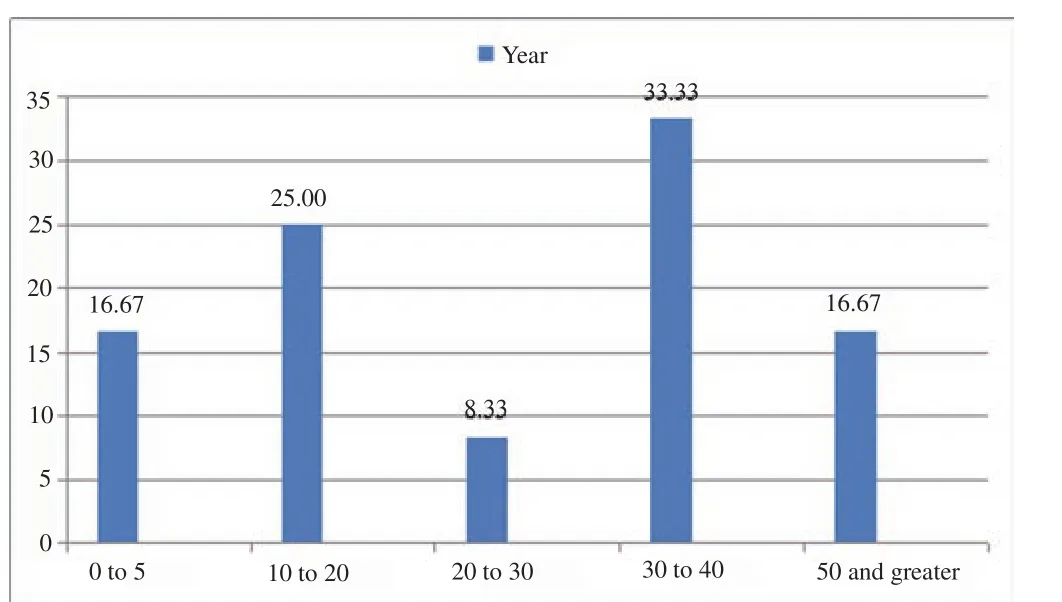
Figure 1. The age of health care centers (year).
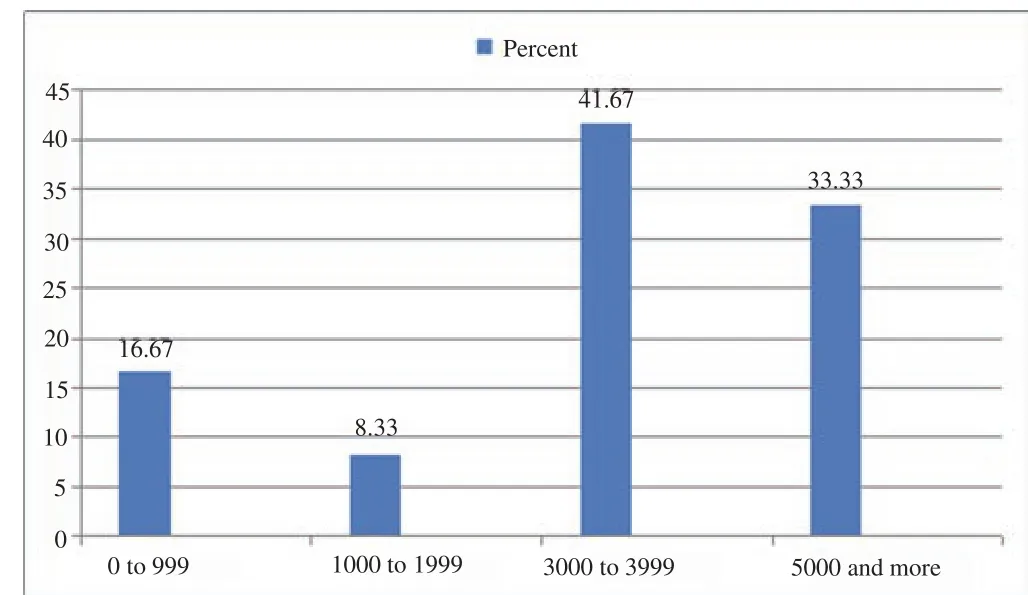
Figure 2. The area of health care centers (m2).
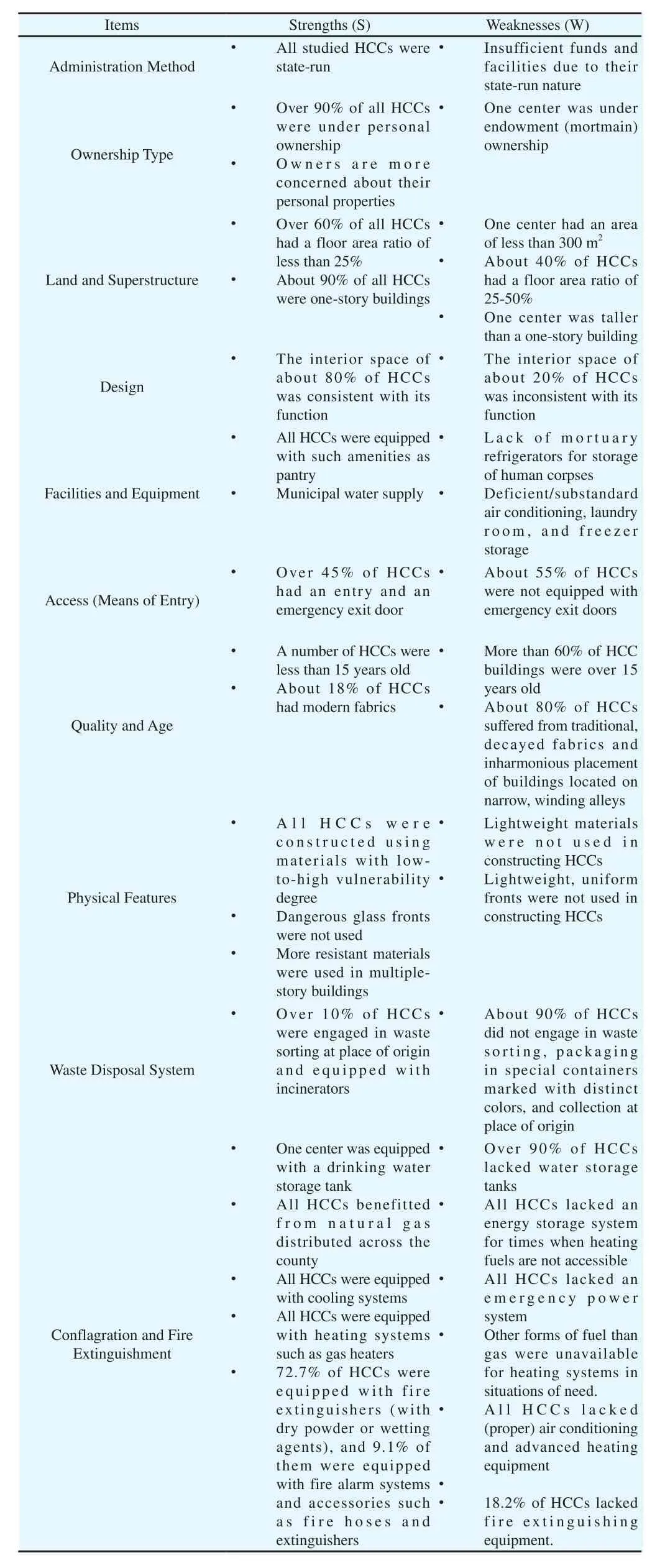
Table 1Strengths and weaknesses (internal factors) analysis matrix of the study area based on the SWOT analysis method.
The evaluation results of internal, external and strategic factors revealed that the figure volume and factor weight were more heavily concentrated on S and W vectors, demonstrating the relatively high degree of instability sustained by HCCs and the necessity for reassessment and effective policies to minimize weaknesses and eliminate threats using strengths and opportunities (Figure 3) (Table 3-7).
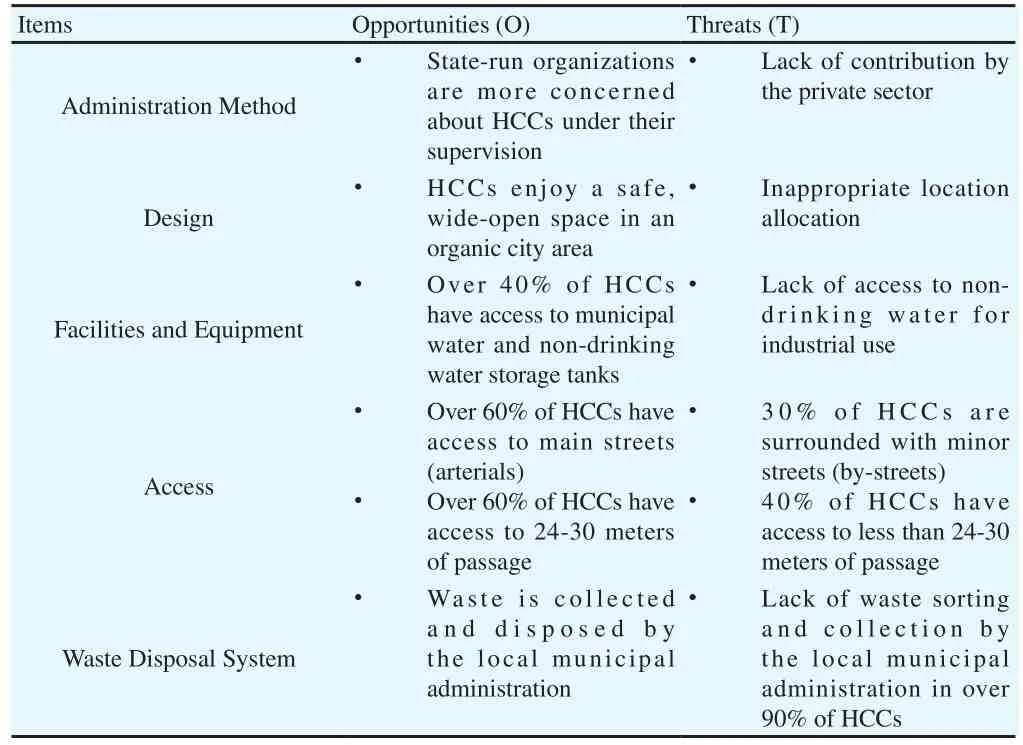
Table 2Opportunities and threats (external factors) analysis matrix of the study area based on the SWOT analysis method.
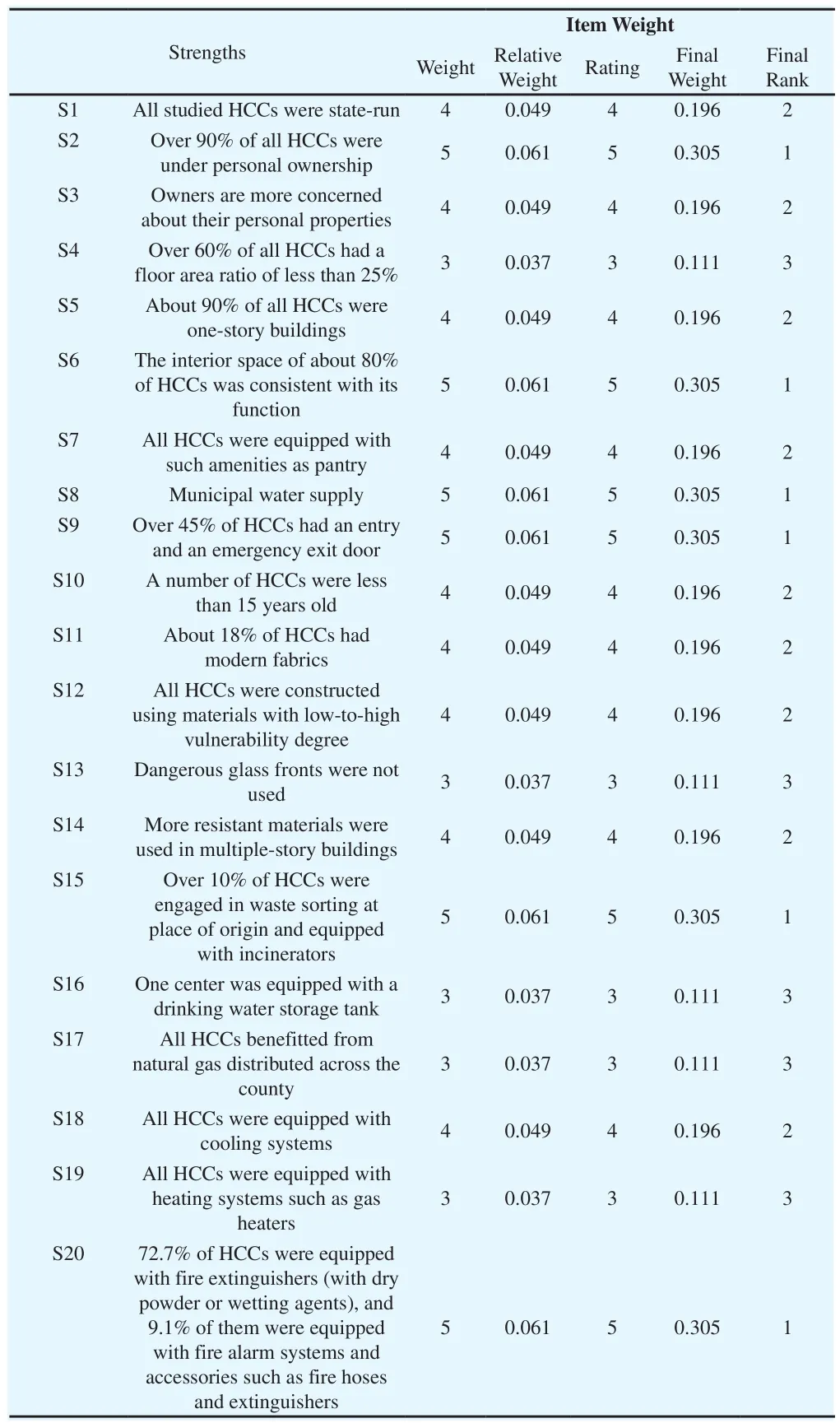
Table 3Ranking and prioritizing of the effective internal factor matrix in Tiran and Karvan County HCCs.
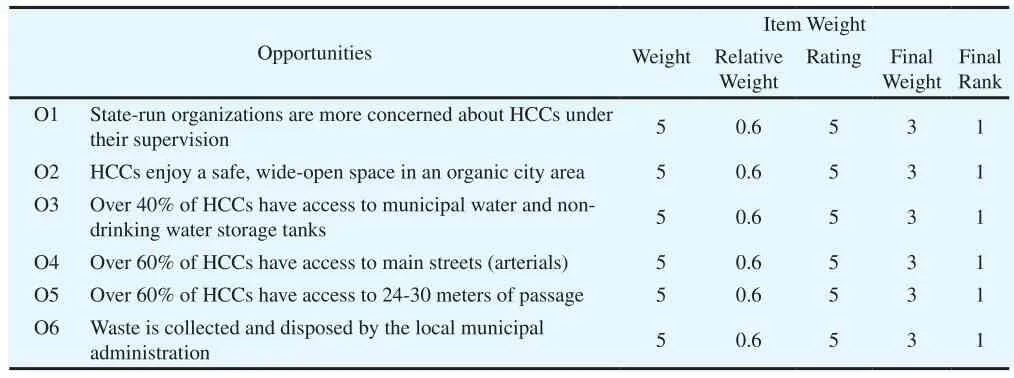
Table 4Ranking and prioritizing of the effective external factor matrix in Tiran and Karvan County HCCs.
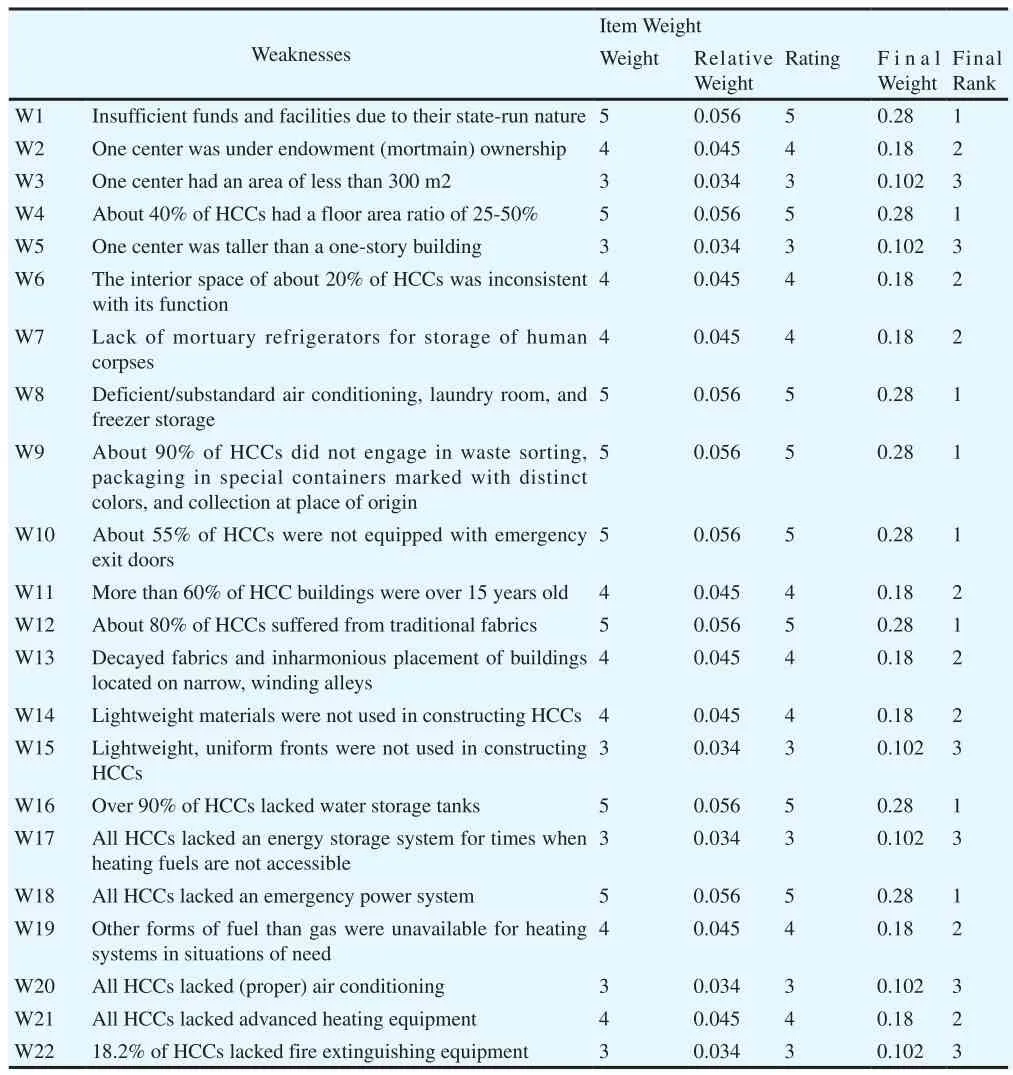
Table 5Ranking and prioritizing of the effective internal factor matrix in Tiran and Karvan County HCCs.

Table 6Ranking and prioritizing of the effective external factor matrix in Tiran and Karvan County HCCs.

Table 7The weighting factor and effectiveness percentage of internal and external factors.
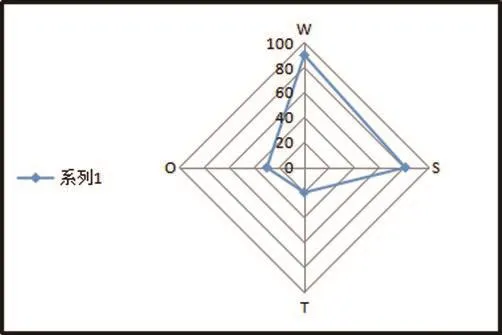
Figure 3. SWOT evaluation vector of internal and external factors.
4. Discussion
The present study aimed to identify the correct path to better development and facilitative, inhibitory, and neutral factors in this way. The results showed that the majority of HCCs were only slightly vulnerable in terms of physical condition, meaning that they were in relatively ideal condition. However, their infectious waste disposal systems were in substandard condition which may lead to the transmission of pathogens and the increased population of disease vectors[35-38]. The majority of HCCs were highly vulnerable in terms of construction quality and age, making the time and decay factors all the more important. Building and physical space features including administration method, ownership type (endowment or leasehold), and year of construction are of particular significance in HCCs and hospitals[39]. The total area, floor area, height (number of stories), design goals, emergency exit doors, and fabric style and type are other effective parameters[40]. The HCCs were in average condition in terms of utilities, construction material reinforcement,durability and type, which calls for greater consideration. It is the city administrators’ obligation to take construction material reinforcement, durability and type into account and introduce regulations for control and supervision purposes. The most valuable materials are used in steel frame structures 1. Construction techniques are directly correlated with mortality rates in that buildings constructed with heavy materials cause greater mortality than those constructed with lightweight materials[41]. Using lightweight, uniform fronts, establishing new HCCs with emphasis on reinforcing materials and securing buildings and distributing new HCCs based on the population density and the condition of transit network are other effective executive priorities in crisis management to improve the condition of HCCs and reduce related damages.
Accordingly, construction reinforcement regulations should be implemented with the highest priority. Sufficient space should be reserved for the construction of new HCCs to avoid crisis and enable the construction of field hospitals in HCC compounds in times of crisis.
The results demonstrated that the studied HCCs were in average condition in terms of utilities such as water, electricity, gas, and heating and cooling systems. The majority of HCCs were moderately vulnerable to fire events, which calls for greater consideration since they most typically occur as secondary incidents following natural disasters. The water, electricity, gas, fire extinguishing, safe waste disposal, and heating and cooling systems are among invariable necessities for preventing natural disaster-induced damages[42].Pourhosseiniet al, examined the role of health care systems in disaster risk reduction, hospital safety in normal conditions and disasters, earthquake-resistant HCC design, associated problems with unsystematic design of HCCs in times of crisis,and the organizational scope of hospitals in Tehran and the related vulnerability to crisis situations[43]. Studies suggest that hospitals and HCCs in Tehran are vulnerable to events such as earthquakes due to the utilized construction materials, e.g. bricks. The hospitals and HCCs in other Iranian cities are in similar conditions[44,45].
The above findings are in line with those of the current study,demonstrating that the majority of urban and rural areas in Iran lack necessary facilities and proper managerial preparedness to deal with severe crises such as major earthquakes.
Given the provided tables, a number of solutions are offered by combining strengths, weaknesses, opportunities and threats of the internal and external environments to reduce potential earthquakerelated injuries in Tiran and Karvan County.
(1)SO Solutions,i.e.maximum utilization of environmental opportunities using strengths are list as following:
SO1: establishing new HCCs with emphasis on reinforcing construction materials and securing buildings
SO2: establishing HCCs with a floor area ratio of less than 50% to enable field hospitals to be constructed in vast, wide-open spaces of their compounds in times of crisis
SO3: installing drinking and non-drinking water storage tanks in HCCs
SO4: providing fire extinguishing utilities such as fire extinguishers with either dry powder or wetting agent and fire alarm systems
(2)ST Solutions,i.e.utilizing organizational strengths to prevent threats are list as following:
ST1: exploiting the private sector in the administration of HCCs
ST2: distributing new HCCs based on the population density and the transit network condition
ST3: waste sorting, packaging in special containers marked with distinct colors, and collection by the local health network at place of origin
ST4: using advanced heating equipment in all HCCs
ST5: adjusting the interior space of buildings to their function
(3)WO Solutions,i.e.utilizing the potential advantages of environmental opportunities to compensate for weaknesses are list as following:
WO1: installing mortuary refrigerators for storage of human corpses WO2: implementing an energy storage system for times when heating fuels are not accessible
WO3: building an air conditioning system, laundry room and freezer storage
(4)WT Solutions,i.e.minimizing damages caused by threats and weaknesses are list as following:
WT1: proper location allocation of HCCs
It is concluded that the collected data are particularly important for the identification of strengths, weaknesses, opportunities and threats in the SWOT strategic planning technique and the development of related matrices. The necessity of paying greater attention to the security of HCCs becomes manifest by their more prominent and specialized role in disaster management compared to other facilities.Accordingly, crisis management strategic planning in HCCs can be derived from a SWOT analysis.
It is recommended that multiple earthquake maneuvers be practiced each year across different districts based on the existing crisis management vision plan in view of the lower cost and lesser time required for their implementation and that geographic information systems be employed in crisis management and HCC location allocation thanks to the accessibility of useful pieces of software for solving problems and making management processes more efficient.Finally, it is suggested that the managerial, professional and utility structures of HCCs be enhanced for crisis situations using modern,scientific, economical and effective solutions.
Conflict of interest statement
The authors report no conflict of interest.
Acknowledgments
This study was conducted at the Social Determinants of Health Research Center and Department of Environmental Health, Kashan University of Medical Sciences, Kashan, Iran, in collaboration with the School of Health, Ahvaz Jundishapur University of Medical Sciences, Ahvaz, Iran, and thanks to them.
 Journal of Acute Disease2018年3期
Journal of Acute Disease2018年3期
- Journal of Acute Disease的其它文章
- Traumatic optic neuropathy secondary to acupuncture treatment for glaucoma: A case report
- Cost analysis and characteristics of the patients admitted to emergency service with poisoning
- A comparison of culture and PCR methods for identification of Aggregatibacter actinomycetemcomitans isolated from acute necrotizing ulcerative gingivitis
- Scoring systems in prediciting mortality rate of patients applying emergency department
- A survey on the epidemiology of trauma and China trauma care training in subtropical regions of Hainan Province
- Traditional Chinese Medicine and its protective function over braininjured patients
